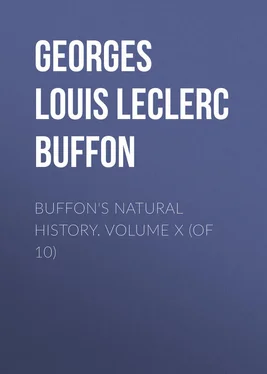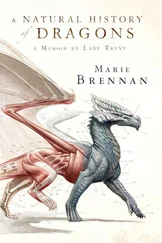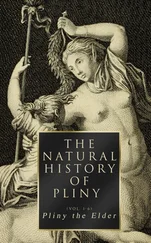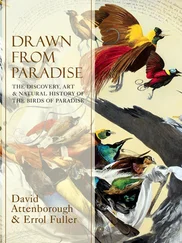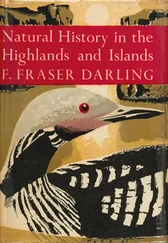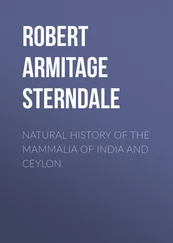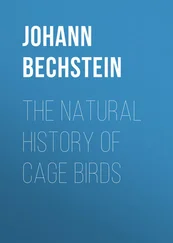Georges Buffon - Buffon's Natural History. Volume X (of 10)
Здесь есть возможность читать онлайн «Georges Buffon - Buffon's Natural History. Volume X (of 10)» — ознакомительный отрывок электронной книги совершенно бесплатно, а после прочтения отрывка купить полную версию. В некоторых случаях можно слушать аудио, скачать через торрент в формате fb2 и присутствует краткое содержание. Издательство: Иностранный паблик, Жанр: foreign_antique, foreign_prose, на английском языке. Описание произведения, (предисловие) а так же отзывы посетителей доступны на портале библиотеки ЛибКат.
- Название:Buffon's Natural History. Volume X (of 10)
- Автор:
- Издательство:Иностранный паблик
- Жанр:
- Год:неизвестен
- ISBN:нет данных
- Рейтинг книги:5 / 5. Голосов: 1
-
Избранное:Добавить в избранное
- Отзывы:
-
Ваша оценка:
- 100
- 1
- 2
- 3
- 4
- 5
Buffon's Natural History. Volume X (of 10): краткое содержание, описание и аннотация
Предлагаем к чтению аннотацию, описание, краткое содержание или предисловие (зависит от того, что написал сам автор книги «Buffon's Natural History. Volume X (of 10)»). Если вы не нашли необходимую информацию о книге — напишите в комментариях, мы постараемся отыскать её.
Buffon's Natural History. Volume X (of 10) — читать онлайн ознакомительный отрывок
Ниже представлен текст книги, разбитый по страницам. Система сохранения места последней прочитанной страницы, позволяет с удобством читать онлайн бесплатно книгу «Buffon's Natural History. Volume X (of 10)», без необходимости каждый раз заново искать на чём Вы остановились. Поставьте закладку, и сможете в любой момент перейти на страницу, на которой закончили чтение.
Интервал:
Закладка:
Buffon's Natural History. Volume X (of 10) Containing a Theory of the Earth, a General History of Man, of the Brute Creation, and of Vegetables, Minerals, &c. &c
OF THE DEGENERATION OF ANIMALS
THE deer-kind whose horns are a sort of wood, and of a solid texture, although ruminating, and internally formed like those whose horns are hollow and porous, seem to form a separate family, in which the elk is the trunk, and the rein-deer, stag, axis, fallow-deer, and roe-buck, are the lesser and collateral branches; for there are only six species of animals whose heads are armed with branched horns that fall off and are renewed every year. Independently of this generic character, they resemble each other still more in formation and natural habitude; we should, therefore, sooner expect mules from the stag or fallow-deer, joined with the rein-deer or the axis, than from a union of the stag with the cow.
We might be still better authorised to regard all the different kinds of sheep and goats as composing but one family, since they produce together mules, which immediately, and in the first generation, ascend to the species of sheep. We might even add to this numerous family of sheep and goats those of the gazelles and bubalus, which are not less in number. The muflon, the wild goat, the chamois, the antelope, the bubalus, the condoma, &c. seem to be the principal trunks of this genus, which contains more than thirty different species, and the others are only accessory branches which have retained the principal characters of the stocks from which they issued; but which, at the same time, have prodigiously varied by the influence of the climate, the difference of the food, and by the state of slavery to which man has reduced most animals.
The dog, the wolf, the fox, the jackal, and the isatis, form another genus, the different species of which resemble each other so strongly, especially in their internal conformation, and in the organs of generation, that it is difficult to conceive why they do not intermix. From the experiments which I made to form a union of the dog with the wolf and fox, the repugnance to copulate seemed to proceed from the wolf and fox rather than from the dog, that is, from the wild animal and not from the tame; for those bitches which I put to the trial would readily have permitted the wolf and fox, whereas the females of the two latter would never suffer the approaches of the dog. The domestic state seems to render animals less faithful to their species: It gives them also a greater degree of heat and fecundity, for the bitch generally produces twice a year, while the females of the wolf and fox litter only once; and it is to be presumed, that those dogs which have been left in desert countries, and which have so greatly multiplied in the island of Juan Fernandes, and in the mountains of St. Domingo, &c. produce only once a year, like the wolf and the fox. This circumstance, if it were proved to be the fact, would fully establish the unity of genus in these three animals, which resemble each other in conformation so strongly as to oblige us to attribute their repugnance to some external circumstances.
The dog seems to be the intermediate species between the fox and the wolf. The ancients have stated, that the dog, in some countries, and under particular circumstances, engenders with the wolf and fox. I was desirous of verifying this assertion, and although I did not succeed in the trials I made, yet we must not conclude that it is impossible, for my experiments were with captive animals; and it is known that in some species captivity alone is sufficient to extinguish desire, and to give them a repugnance to copulation, even with their own kind; consequently they would still more refuse to unite with individuals of another species: but I am persuaded, that when in a state of freedom, and deprived of his own female, the dog would unite with the wolf and fox, particularly if he had become wild, lost his domestic cast, and approached the manner and natural habits of these animals. The fox and wolf, however, never unite, though they live in the same climate and country, but support their species pure and unmixed; we must, therefore, suppose a more ancient degeneration than history has recorded, if they ever belonged to one species; it was for this reason I asserted that the dog was an intermediate species between the fox and wolf; and his species is also common, since it can unite with both; and if any thing could shew that they all three originally sprang from the same stock, it is this common affinity between the dog, the fox, and the wolf, and which seems to bring their species nearer than all the conformities in their figures and organization. To reduce the fox and wolf, therefore, into one species, we must return to a state of nature very ancient indeed; but in their present condition, we must look upon the wolf and fox as the chief trunks in the genus of the five animals. The dog, the jackal, and the isatis, are only lateral branches placed between the two first; the jackal participates of the dog and wolf, and the isatis of the jackal and fox. From a great number of testimonies it appears that the jackal and the dog engender easily together; and it is observable, from the description and history of the isatis, that it almost entirely resembles the fox in its form and temperament, that they are equally found in cold countries, but that, at the same time, it inclines to the jackal in its disposition, continual barking, clamorous voice, and the habit of always going in packs.
The shepherd’s dog, which I have considered as the original stock of every other dog, is, at the same time, that which approaches nearest in figure to the fox. He is of the same size, and, like the fox, he has erect ears, a pointed muzzle, and a strait trailing tail. He also approaches the fox in voice, sagacity, and instinct. The dog, therefore, may originally have been the issue of the fox, if not in a direct, at least in a collateral line. The dog, which Aristotle calls canis-laconicus , and which he affirms to have proceeded from an union of the fox and dog, might, possibly, be the same as the shepherd’s dog, or, at least, it has more relation to him than to any other dog. We might, therefore, be inclined to imagine, that the epithet laconicus , left uninterpreted by Aristotle, was only given to this dog because he was found in Laconia, a province of Greece; and of which Lacedæmon was the capital; but if we attentively consider the origin of this laconic dog we shall perceive that the breed was not confined to the country of Laconia, alone but must have been found in every country where there were foxes; and this induces me to presume, that the epithet laconicus might possibly have been used by Aristotle in a moral sense, to express the brevity and acuteness of his voice, because he did not bark like other dogs, but had a shorter and shriller note, like that of the fox. Now our shepherd’s dog is that to which we can justly apply this term of laconic , for of all dogs his voice is the sharpest and most rarely employed. Besides, the characters which Aristotle gives to his laconic dog agree with those of the shepherd’s dog, and perfectly persuade me they are the same.
The genus of cruel and rapacious animals is one of the most numerous and most diversified; evils here, as in other cases, seem to be produced under every shape, and to assume various natures; the lion and the tiger, being detached species, rank in the first line; all the others, as the panther, the ounce, the leopard, the lynx, the caracal, the jaguar, the cougar, the ocelot, the serval, the margai, and the cat, compose only one cruel family, whose different branches are more or less extended and diversified according to the difference of climate. All these animals resemble each other in natural dispositions, although they are very different with respect to size and figure.
Читать дальшеИнтервал:
Закладка:
Похожие книги на «Buffon's Natural History. Volume X (of 10)»
Представляем Вашему вниманию похожие книги на «Buffon's Natural History. Volume X (of 10)» списком для выбора. Мы отобрали схожую по названию и смыслу литературу в надежде предоставить читателям больше вариантов отыскать новые, интересные, ещё непрочитанные произведения.
Обсуждение, отзывы о книге «Buffon's Natural History. Volume X (of 10)» и просто собственные мнения читателей. Оставьте ваши комментарии, напишите, что Вы думаете о произведении, его смысле или главных героях. Укажите что конкретно понравилось, а что нет, и почему Вы так считаете.
